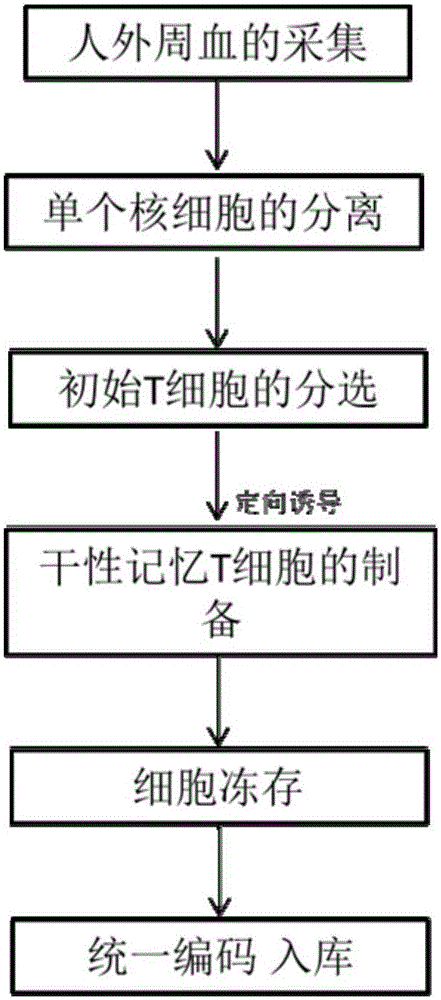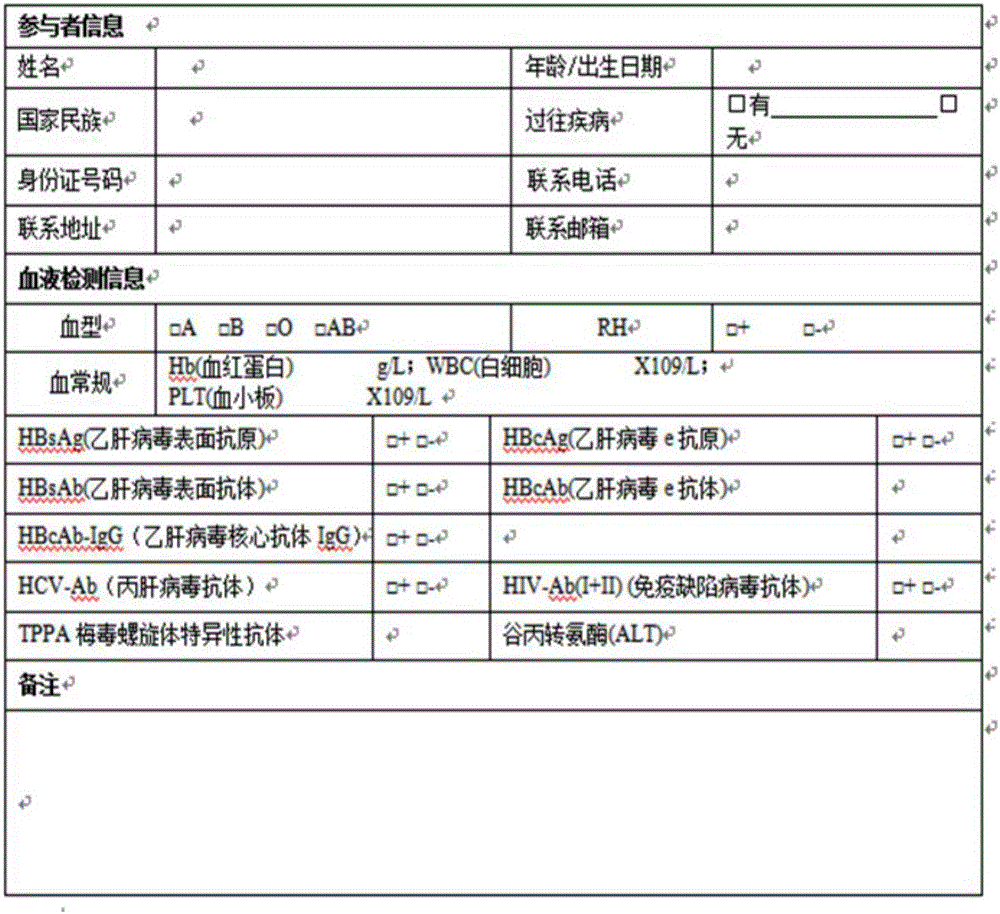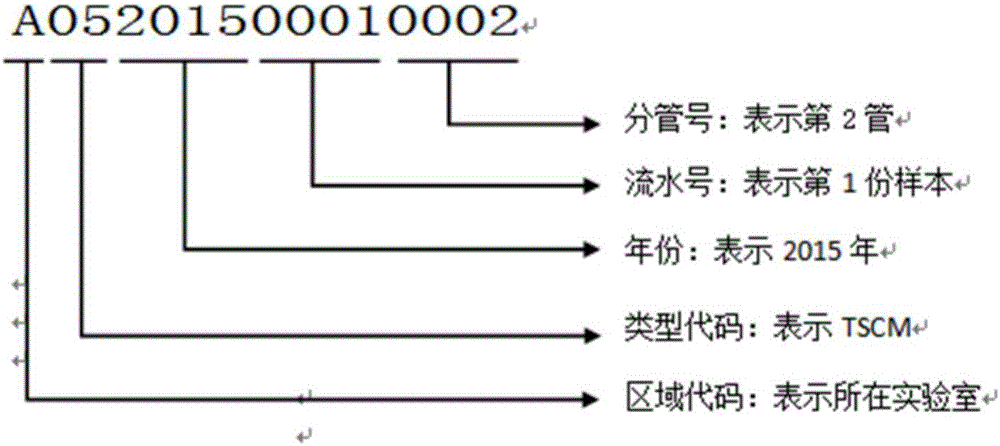Construction method of human stem memory T cell bank
A construction method and cell technology, which are applied in the construction of human stem memory T cell bank and the construction of human peripheral blood immune cell bank, can solve the problems of low efficiency, high preparation cost, large demand for peripheral blood, etc. Low, easy-to-use effects
- Summary
- Abstract
- Description
- Claims
- Application Information
AI Technical Summary
Problems solved by technology
Method used
Image
Examples
Embodiment 1
[0082] A method for constructing a human stem memory T cell bank, comprising the following steps:
[0083] (1) Collection of human peripheral blood
[0084] The cell storage participants signed the informed consent form, and the physical examination results showed that their blood routine, hepatitis B, hepatitis C, syphilis, AIDS, and alanine aminotransferase were in line with the relevant blood collection regulations in the national "Basic Standards for Blood Stations"; 60 mL of peripheral blood was manually collected Store in a blood collection bag containing anticoagulant at 4°C and send it to the cell preparation room as soon as possible.
[0085] (2) Separation and freezing of plasma
[0086] Transfer the blood in the blood collection bag to the centrifuge tube on the clean bench, cut the plastic tube with sterilized scissors, carefully pour the peripheral blood in the bag into the centrifuge tube, and centrifuge at 1800rpm for 12 minutes at room temperature. Centrifuge...
Embodiment 2
[0100] Compared with Example 1, the difference is only in step (3), the specific operations are as follows, and the others are the same as in Example 1.
[0101] (3) Divide the collected peripheral blood into centrifuge tubes, centrifuge at room temperature at 1600rpm for 12min, take the supernatant to obtain autologous plasma, and store it at -20°C for later use; after separating autologous plasma, use normal saline at a ratio of 1:1 Dilute the lower layer of blood cells, and slowly and uniformly add the diluted blood cell suspension to the Ficoll-Paque TM Above the lymphocyte separation medium, centrifuge at room temperature at 1800rpm for 20min. After centrifugation, layers appear in the centrifuge tube. Carefully transfer the buffy coat layer to another centrifuge tube, and collect the obtained components to obtain PBMC.
Embodiment 3
[0103] Compared with Example 1, the difference is only in step (3), the specific operations are as follows, and the others are the same as in Example 1.
[0104] (3) Divide the collected peripheral blood into centrifuge tubes, centrifuge at room temperature at 1800rpm for 14min, take the supernatant to obtain autologous plasma, and store it at -20°C for later use; after separating autologous plasma, use normal saline at a ratio of 1:1 Dilute the lower layer of blood cells, and slowly and uniformly add the diluted blood cell suspension to the Ficoll-Paque TM Above the lymphocyte separation medium, centrifuge at room temperature at 1900rpm for 22min. After centrifugation, layers appear in the centrifuge tube. Carefully transfer the buffy coat layer to another centrifuge tube, and collect the obtained components to obtain PBMC.
PUM
 Login to View More
Login to View More Abstract
Description
Claims
Application Information
 Login to View More
Login to View More - R&D
- Intellectual Property
- Life Sciences
- Materials
- Tech Scout
- Unparalleled Data Quality
- Higher Quality Content
- 60% Fewer Hallucinations
Browse by: Latest US Patents, China's latest patents, Technical Efficacy Thesaurus, Application Domain, Technology Topic, Popular Technical Reports.
© 2025 PatSnap. All rights reserved.Legal|Privacy policy|Modern Slavery Act Transparency Statement|Sitemap|About US| Contact US: help@patsnap.com



